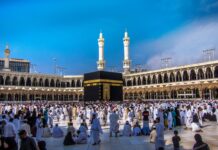Eisa Ali argues that the worsening situation in Syria, particularly the solidification of the rule of the Al Qaeda group The Islamic State of Iraq & Sham in the north east of the country, has led to a dramatic rise in violence in neighbouring Iraq.
Iraq’s Prime Minister Nuri Maliki must move carefully if he is to avoid his country once more being plunged into complete chaos.
The civil war in Syria has seen huge fall out in neighbouring countries and has contributed to the re-emergence of Al Qaeda groups who belong to the Salafist sect, an austere reading of Sunni Islam. The Islamic State of Iraq and Sham (ISIS) is one of these groups and its roots are based in the US invasion and occupation of Iraq, where they emerged as the most extreme and brutal of the groups involved in the insurgency.
The group’s leader, the notorious Abu Musab Al Zarqawi, was a Jordanian militant with a fearsome reputation as a street thug in the 1980s. Towards the end of the decade he had become radicalised and made his way to Afghanistan to fight the Soviet invasion. He spent 6 years in a Jordanian jail on terror charges in the 1990s and floated around several countries before eventually finding himself in Iraq.
He played a crucial role in turning the anti-US insurgency, which involved both Sunni and Shia groups, into a sectarian war targeting the Shia majority. His group, Jama’at Tawhid wal Jihad (monotheism and holy war), regularly claimed responsibility for the most brutal massacres which targeted the Shia and didn’t discriminate between civilian and combatant.
At the time of his death in 2006 by way of a US air strike, his group was known as Al Qaeda in Iraq and later known as the Islamic State of Iraq (ISI). They had taken control of several towns in North and West Iraq, including Baquba and were only uprooted by the 2008 US “troop surge” and, more importantly, a “Sahwa” movement (the ‘Awakening’) by Iraqi Sunni tribes.
Jihadist groups
Subscribe to our newsletter and stay updated on the latest news and updates from around the Muslim world!
The Sunni Arabs had initially welcomed the jihadist groups to fight the US and its army as well as the Shia. The sheer brutality of these groups, however, even targeted the Sunnis themselves and led to them outstaying their welcome. When the tribesmen had had enough, the US saw an opportunity and paid the Sahwa fighters salaries while they fought the Al Qaeda groups. One prominent leader was Sattar Abu Risha who met with former US President George Bush in Anbar province in Western Iraq. He was killed soon that meeting after in a bomb attack claimed by Al Qaeda.
Nonetheless, the strategy proved successful in severely cutting Al Qaeda down. They relied on cooperation from the Sunnis, without it they had little room to breathe. They continued to tick over quietly in some parts of the country, their main stronghold being in Mosul, north of Iraq, and would launch attacks against both government forces and Shia civilians in the country’s south, many times targeting the pilgrims who visit the shrines of the Shia Imams. They would also continue to attack members of the Sahwa, Sunnis who they deemed “traitors” and “apostates.”

Regardless, their ability to take and hold territory was severely restricted. That is, until the conflict in neighbouring Syria exploded. As the civil war has dragged on over the last 2 and a half years, the most fanatical, and sectarian, of the sunni groups fighting Bashar al Assad have come to the fore. Groups like Jabhat Al Nusra, Al Qaeda’s other (and more loyal) affiliate, have proved most competent in fighting government forces.
Unlike many other rebel groups they don’t have a reputation for criminality and have used the Gulf money lavished on them to reach out to the local populations they control with the provision of vital goods and services, a policy of winning “hearts and minds” if you will.
The ISI also sent fighters across the border to fight Assad in Syria once the conflict began and in April 2013 it’s Emir (leader) Abu Bakr Al Baghdadi unilaterally announced the merger of his group with Jabhat Nusra, announcing the formation of the Islamic state of Iraq and Sham (ISIS). Surprised by this, the Nusra leader, Abu Mohammad Al Golani, responded with a respectful but firm rejection of the merger and pledged his allegiance not to Al Baghdadi but to Ayman Al Zawahiri, the Egyptian successor to Osama bin Laden as leader of the international Al Qaeda network. Jabhat Al Nusra continues to fight under its own name and, despite tensions, also fights alongside ISIS on various fronts.
Nevertheless, despite this rejection, many Jabhat Nusra fighters defected to ISIS and the group has continued to strengthen at an alarming rate, attracting thousands of foreign fighters from as far afield as London and the USA. It has solidified it’s control over Raqqah, a city in the north of Syria with a population of 220,000, with the BBC’s Tim Whewell saying it “may be the largest city in the world ever to be controlled by al-Qaeda.”
This has allowed ISIS a significant increase in resources beyond its private funding sources in the Gulf and has meant the group has felt emboldened to increase its activity in Iraq. Earlier this year, the group pulled off an incredible assault on the Abu Ghrayb prison just west of Baghdad, notorious for the torture committed by US forces during the occupation. Hundreds of Al Qaeda terrorists, many of them convicted killers on death row, were sprung as Iraqis were left wondering how such an attack could take place. Rumours swirled of insiders helping the attackers. It certainly wouldn’t be beyond the realms of credibility – from Iraq to Afghanistan, Al Qaeda have regularly used a combination of bribery and threats to infiltrate security forces in order to commit attacks.
Attacks
They have also increased the number of attacks on Iraqis. In the past 12 months, the UN estimates, 8,000 civilians have been killed, the vast majority of them Shias killed in bomb and shooting attacks. As Patrick Cockburn argues this in his latest piece in the Independent, this violence is being fuelled by hate preachers based in the Sunni Gulf Kingdoms.
With the violence increasing, and mindful of growing public anger at the lack of security, Iraqi prime minister Nuri Maliki launched a campaign against ISIS, whose ranks are swelling. Mr Maliki turned to the USA to request vital equipment to fight the insurgents and this was delivered in the shape of hellfire missiles and ScanEagle drones, with talk of more to follow.
While Mr Maliki’s latest campaign is receiving considerable support from ordinary Shias fed up with being killed so brazenly, he has been criticised by political rivals, not least his Shia rivals, Moqtada Sadr and Ammar Al Hakim for pursuing a military solution minus a political one. While one can speculate that Messrs Hakim and Sadr have one eye on next years elections, they raise pertinent points.
Early in 2013, Sunni leaders organised sit-down street protests following the arrest on terror charges of bodyguards loyal to Sunni MP Rafia al-Issawi. They also made other political demands, including a rolling back of de-Baathification laws which limit the public role played by members of the regime of former dictator Saddam Hussain, which Sunnis Arabs say target them as they prospered under his rule.

Mr Maliki sought to appease the protestors but aware that his own Shia constituency wouldn’t allow him to meet some of the more contentious demands like de-Baathification, was ultimately unable to placate the protesters demands. When the protests turned violent, Maliki sent security forces to break up the camp.
In the latest crackdown, the fugitive Sunni MP Ahmed Alwani was arrested by security forces. His brother was killed in the shoot-out when Mr Alwani’s entourage opened fire on the arresting officers. Alwani was a prominent organiser of the protest camps and was filmed making derogatory statements about Shias in speeches he gave to the protesters.
The protest camps are still there and have been accused of sheltering ISIS’s fighters. There is no doubt that the group has certainly found a more receptive Sunni populace in Iraq this year. In keeping with growing sectarian tensions in the region, the Syrian rebels found much support in Sunni areas of Iraq like Anbar and Ninevah. ISIS have exploited this and the tensions within Iraq to their own ends, reaching out once more to the locals. Analysts have no doubt that the latest violence will contribute to even more animosity towards the government among Sunnis.
This is where Mr Maliki must embrace a political approach as opposed to solely a military one, in line with the Sahwa model before he completely loses the support of the Sunni Arabs. The German-Prussian military theorist Carl Von Clausewitz once wrote that “The political object is the goal, war is the means of reaching it, and the means can never be considered in isolation from their purposes.”
If Mr Maliki wants to keep the Sunnis out of the arms of ISIS who are pitching themselves as the defenders of the Sunnis, he must keep Von Clausewitz’s lesson in mind. Maliki must reconcile with the Sunni tribes in Anbar and other areas if he wants his operation to succeed. This will involve political and economic concessions that he will find hard to explain to his own beleaguered Shia constituency. He has to find credible, influential and powerful allies to work with who will step back from the brink.
This course of action may hurt him in next year’s elections but if he doesn’t do it Iraq faces the prospect of brutal internecine warfare like that seen in 2006-7. If that results in even more attacks on Shias, it could lead to the mobilisation once more of Shia militias seeking revenge. And if that happens, neither Maliki nor anyone else will be able to control the fall-out and the consequences will be devastating for not just the region but the world.
This article was first published in the online news magazine Digital Resistance. You can read the article there by clicking on the link below.






















